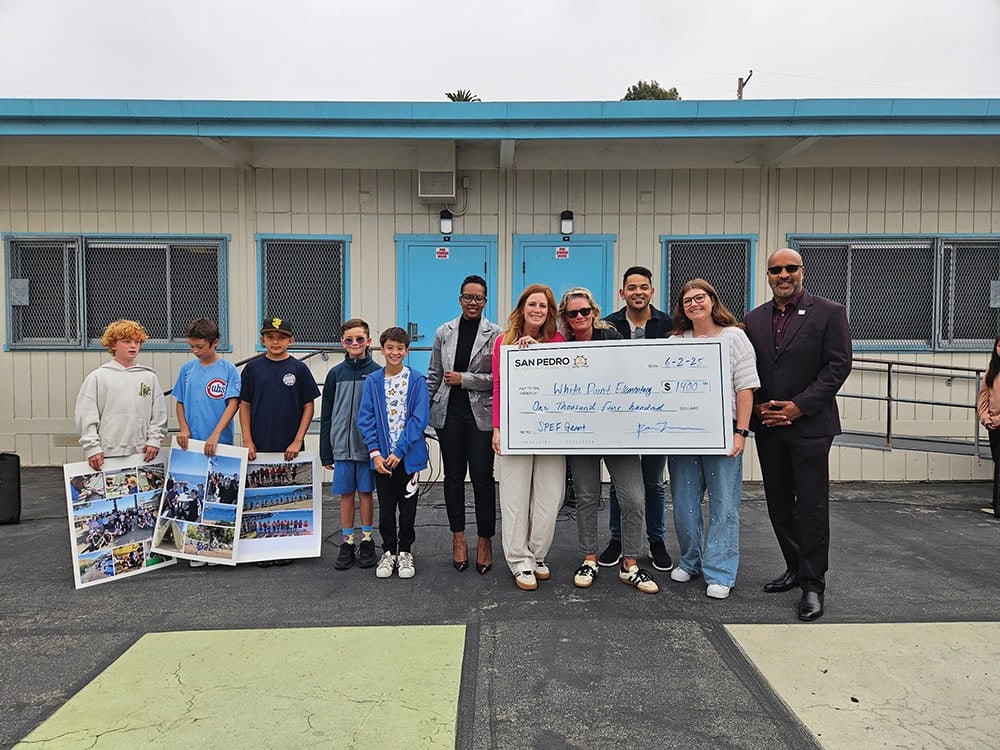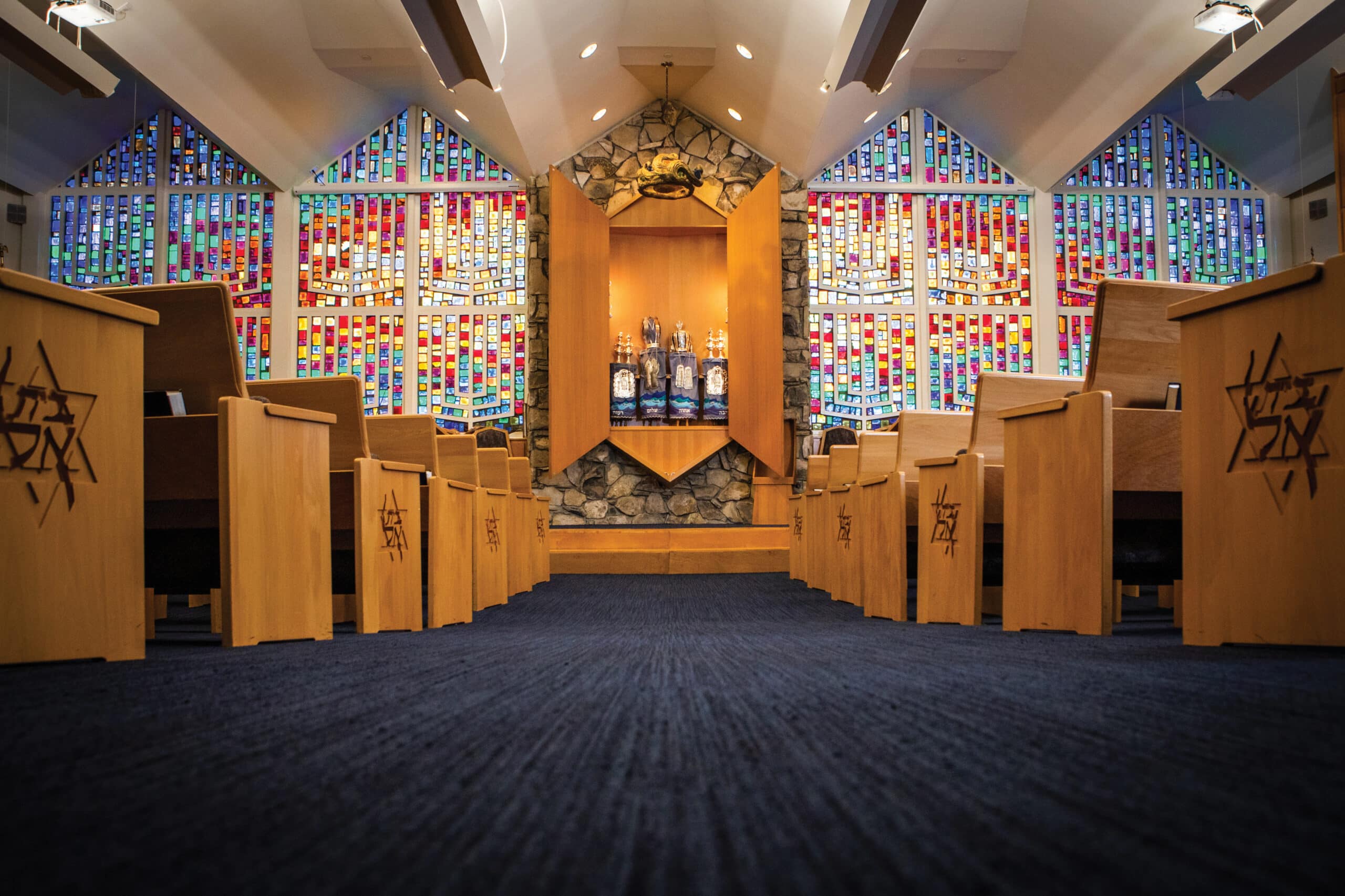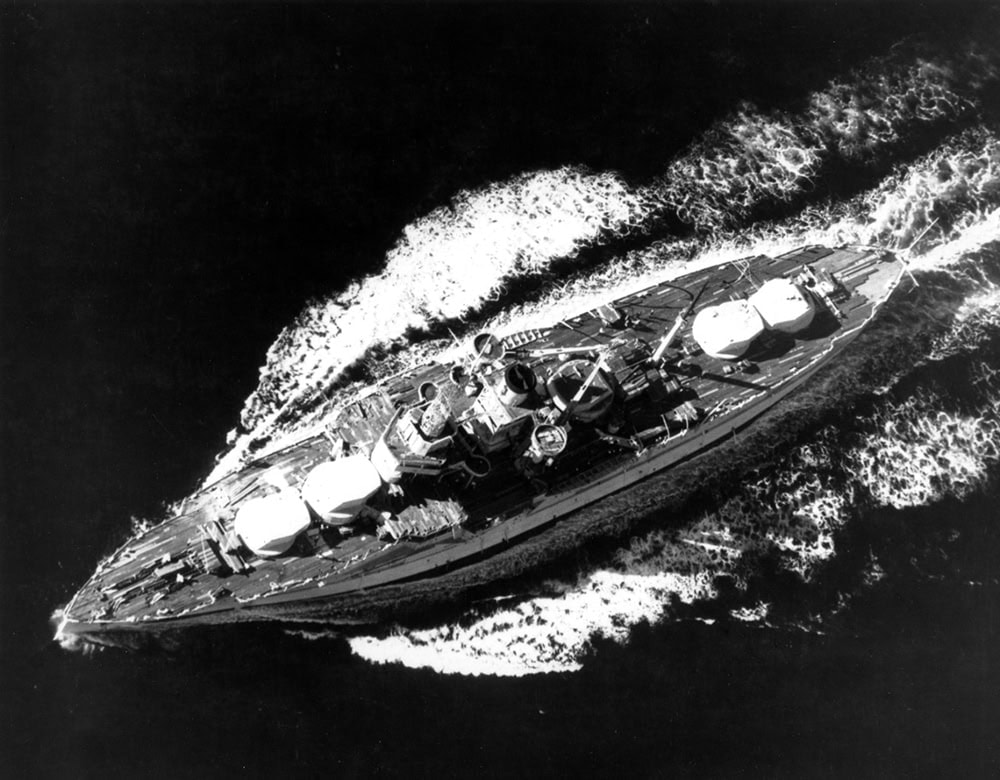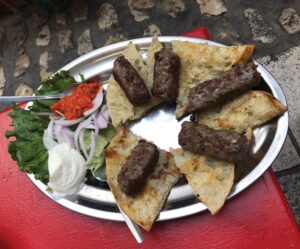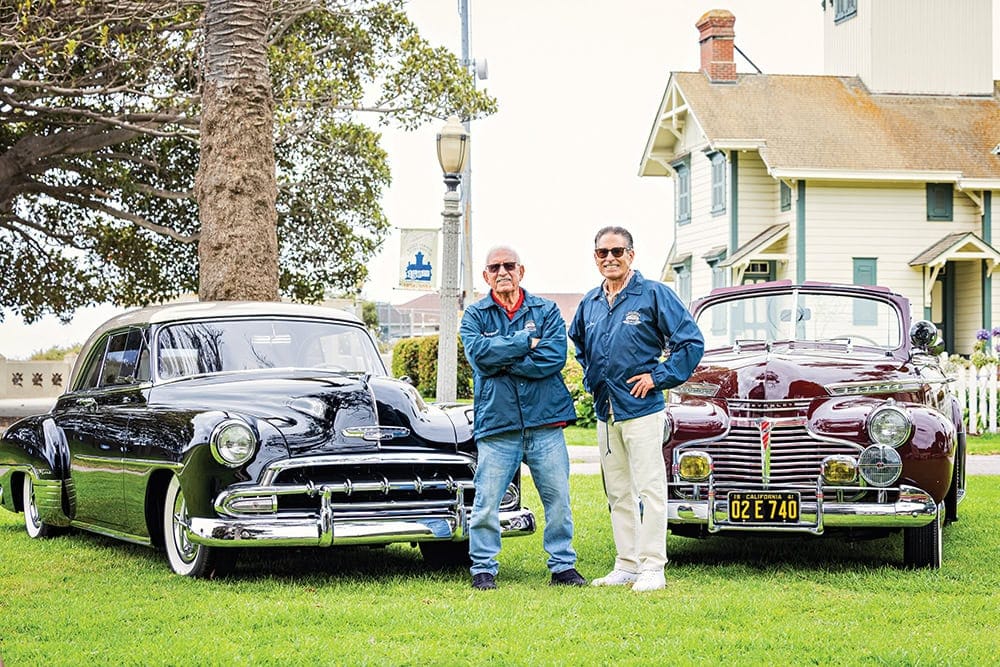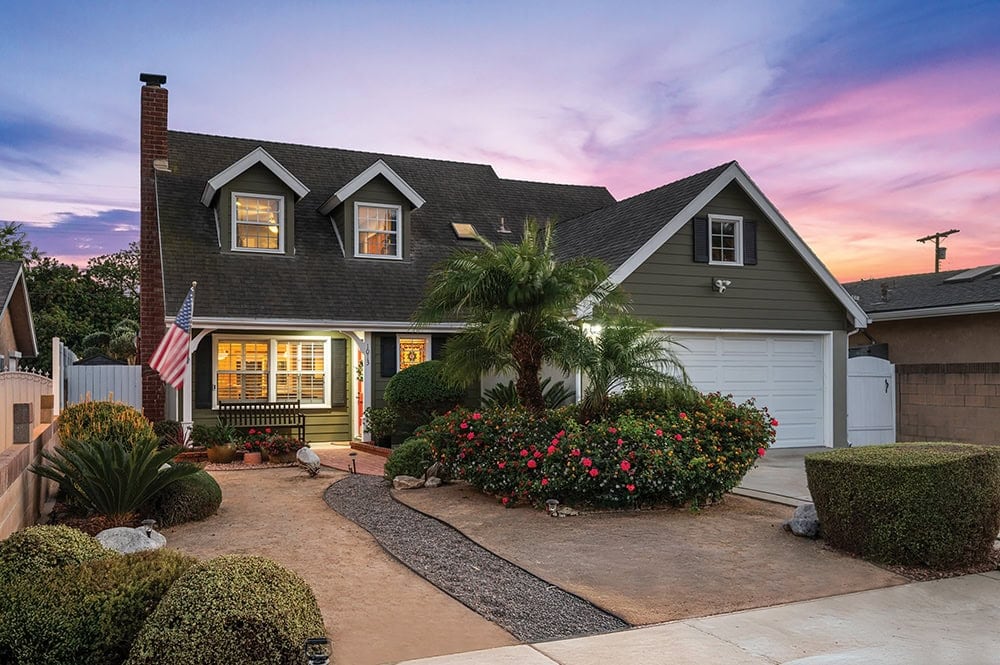This spring, the San Pedro Education Foundation—along with San Pedro Today—launched the inaugural Pedro Pen Writing Contest, inviting graduating high school seniors to showcase their creativity in 500 words or less.
In addition to publication in this month’s issue, the top three writers received scholarships: $1,000 for first place, $500 for second, and $250 for third. After careful review by a panel of judges, three students stood out: Hannah Morris from San Pedro High School won first place; Zachary Blackwell from Mary Star of the Sea High School took second; and Milad Esfahani, also from San Pedro High, placed third.
The Pedro Pen Contest is one of many initiatives by the San Pedro Education Foundation (SPEF), a nonprofit supporting local public education. Founded by San Pedro residents, SPEF bridges the gap between public funding and student needs, offering mentorship, enrichment, and programs in robotics, arts, and entrepreneurship.
By partnering with teachers, families, and local leaders, SPEF strengthens the educational community and gives students platforms to express themselves and be recognized.
Congratulations to this year’s winners—and thank you to everyone who submitted. Your voices matter.
For more information, visit sanpedroeducationfoundation.org. spt
FIRST PLACE
Next Door, Across the Street, and Around the Block
by Hannah Morris
San Pedro High School, 12th Grade
 Legs dangling, sitting at a wooden picnic table with a pink plastic tablecloth, metallic confetti strewn around the yard, and dozens of nameless relatives laughing, sharing stories–it’s finally time for cake.
Legs dangling, sitting at a wooden picnic table with a pink plastic tablecloth, metallic confetti strewn around the yard, and dozens of nameless relatives laughing, sharing stories–it’s finally time for cake.
We sing, then the first slice goes to my neighbor’s little cousin, the birthday girl. Though I’m the only outsider at this party, I feel excited and included as part of a family that isn’t “really” mine.
My parents moved to San Pedro the year before I was born—a tiny yellow house in a completely new town. When they first brought me home, according to my mom, I was met with pink streamers and balloons left by our kind new neighbors and congratulations from around the block. San Pedro has welcomed me from the moment I was born.
Later, the house across the street would become my first stop of the day. On bright, early mornings, I would sit in their yellow-tile kitchen, waiting patiently for my best friend to finally wake up. In trampoline chaos, sidewalk talent shows, and tree-branch picnics, I found what surely felt like a sister. With her, I would run as fast as I could down our sidewalk, dashing to knock relentlessly on the screen door around the block.
In this house lived our adopted grandparents, an older couple that met our youthful persistence with hard candy and a cozy spot on their wicker couch. My favorite visits were when the photo albums came out; as we flipped through the pages, tales of their 1950s interracial love story, of their move to San Pedro, and of their vibrant church community came alive. They were great storytellers, and we would always be back for more.
The day we learned of the wife’s passing, even in my first grief experience, I was surrounded and supported by my local family. Placing camellia petals on a tree stump overlooking the port, we held a little-kid memorial, remembering her warmth and care.
These flowers had been picked–with permission–from the lovely bushes of my next-door neighbor, a sweet woman with the most beautiful lawn and garden. At her house, when my friends from across town would come for playdates, this well-manicured front lawn was our dance floor, and the porch, a stage for the sing-song announcer. Occasionally, she would step out to watch, smiling.
Many of the people I knew moved away, including our family, and there are now several new faces on the block, yet old faces remain, never too busy for a chat when I’m around. Even with my friends who left–ten years later–we still exchange monthly text messages to keep in touch.
I will soon be moving away to college, wondering who my new community will be, but our town has taught me that family and connection are anywhere and everywhere that you choose to find it. And San Pedro will forever be my home. I know that, however long I may take to return, there will still be room for me. spt
Hannah Morris will attend UC Berkeley this fall as an English major. She’s excited to join student journalism and engage with Berkeley’s vibrant campus life. Passionate about advocacy, Hannah hopes to pursue a career in environmental or political journalism, using her writing to amplify underrepresented voices and important causes.
SECOND PLACE
My Hometown San Pedro
by Zachary Blackwell
Mary Star of the Sea High School, 12th Grade
 I spent the first 12 years of my life living in San Pedro.
I spent the first 12 years of my life living in San Pedro.
Like many coastal towns across the country, it started with the fishing industry and blossomed into much more. Over the years, it has grown to be a place to be called home by so many people and really has one of the most welcoming crowds, in my opinion. And it is not only home to many people, but it is also called home to many historical sites of not just a time that is long gone, but also recent and future historical sites and places that will be remembered centuries from now.
One of the first things that you will notice about San Pedro is that it is located right next to the sprawling expanse of the Port of Los Angeles. Among that is probably one of the most relevant pieces of wartime history, the USS Iowa. As a child passing by the ship, I would always look at it as if it was the most beautiful thing I had ever seen. I always wanted to go onto that beautiful ship whenever possible to grab the feeling of being a sailor on her when she was sailing. To me, being able to experience the feeling of a long gone time is something that cannot be replicated. If you are not local to San Pedro, you might not even know of the ship until you arrive. But she has an ability to draw in people regardless of whether or not they are really into history. And if you ask me, she is a symbol of pride for the community there.
Aside from the many historical locations there, the community is like one that I have not seen anywhere else. It’s almost like it is just one massive family that lives there. Whenever I drive through where I used to live and where a lot of my friends that I’ve had for a while live, I feel welcomed. To me, it’s a very suburban version of a small town from the Midwest, and you know almost everyone that is there and care for them like they are your direct family. Having spent the first three-quarters of my life there, I got to meet so many people and hardly ever were they rude or demeaning, most of the friends I made when I was there remain friends of mine to this day.
All in all, someone might think of San Pedro as just another suburban town that’s connected to a major city. But to me, it will always be my home and my family. It is where I feel the most comfortable and where I know where everything is. I live in Lomita now, but whenever I return to San Pedro, I feel like I never left. spt
Zachary Blackwell is heading to Cal State Fullerton to major in criminal justice. His long-term goal is to serve his community as a Los Angeles County Sheriff’s deputy, with hopes of eventually rising through the ranks to become the county’s sheriff. Zachary is driven by a strong sense of duty and commitment to public service.
THIRD PLACE
Pedro’s Ancient Water World
by Milad Esfahani
San Pedro High School, 12th Grade
 When most people think of San Pedro, they usually think of the beautiful sandy beaches, lush green trees lining the boulevard, and a wonderful, close-knit community they know and love.
When most people think of San Pedro, they usually think of the beautiful sandy beaches, lush green trees lining the boulevard, and a wonderful, close-knit community they know and love.
However, there is a whole ‘nother side of Pedro that is barely known or talked about simply because of how obscure it is. What I am talking about are the remnants of the prehistoric world that occupied the land of what would become San Pedro.
If you go back millions to even just thousands of years and look at the South Bay Area, you would notice that the Palos Verdes Peninsula and San Pedro are actually instead an island rising out of a shallow part of the ocean that spread all the way to the mountain range surrounding us, as we used to be one of the Channel Islands. Slowly over time, as the sea levels naturally lowered to today, more land was left uncovered, and what would become the Greater LA area was left. However, this had a major effect on the physical characteristics of San Pedro.
If you live in San Pedro and drive around (or bike like me), you would notice how San Pedro is completely traversed in hills and short plateaus. This is because each of those “steps” used to be a beach and its towering cliffs accompanying it. As time went by, the ocean receded and there would be a new beach again to the point where we have our picturesque Cabrillo, Point Fermin, and Royal Palms beaches. Because of this, it is really easy to find the remnants of these old habitats all around San Pedro in the right conditions.
This causes quite the phenomenon where San Pedro and the surrounding areas have become quite the hotspot in finding fossils and evidence of prehistoric life. This is seen in the recent discovery at our own San Pedro High School, where an ancient canyon caused fossils and shells from three different time periods to all group up in that locality and create a treasure trove for paleontologists.
As I was able to work with the Natural History Museum last summer, I soon realized how much our beautiful town was connected to the ocean and all that call it home. I soon realized that studying marine biology and eventually becoming a paleontologist can help me discover how San Pedro’s environment used to be so that we can learn lessons from them and use them today. Without the ocean and its inhabitants, we wouldn’t have our iconic landmarks like the Korean Friendship Bell or Sunken City, and we should learn to keep the nature in the area healthy and safe as it keeps us going strong. spt
Milad Esfahani, a graduate of San Pedro High’s Marine Science Magnet, will attend UC Santa Cruz as a Marine Biology major. Once set on becoming a paleontologist, he now dreams of combining that passion with marine science. Milad hopes to return to San Pedro one day to teach and inspire future generations of scientists.
